2025 Skilled Migration Guide: Carpenters, Painters & Cabinet Makers

Australia is facing an unprecedented shortage of skilled trade workers, particularly in construction-related roles such as carpenters, painters, and cabinetmakers. These occupations have become some of the most in-demand pathways for skilled migration.
Major infrastructure projects tied to the 2032 Brisbane Olympics, along with the rapid growth of green buildings and smart homes, have made carpentry migration a key opportunity of the decade.
To address the growing skills gap, the Australian government has lowered the skilled migration threshold, and cabinetmaking and painting courses are now gaining significant attention from international students.
As of now, carpentry-related occupations only require 65 points to receive an invitation. This article provides a complete overview of Australia’s carpentry migration pathways and job outlook—helping you seize this valuable migration opportunity.
Table of Contents
1. Why Are Carpentry Jobs Soaring in Australia? A Full Breakdown of 4 Key Trends
2. Low EOI, Big Opportunities: A Complete Guide to Carpentry Skilled Migration
3. Carpentry Salaries and Labour Shortage Map: The Top 5 Cities with the Most Job Openings
4. Which Trade Course Fits You Best? A Complete Guide to Carpentry, Painting, and Cabinetmaking
Conclusion: Carpentry isn’t just a migration shortcut — it’s a gateway to a skilled career.
1. Why Are Carpentry Jobs Soaring in Australia? 4 Key Trends

1.1 Population Surge Fuels Housing Crisis
Australia’s population surged by a record 500,000 in 2023, largely due to high net migration, creating strong demand for housing. However, the government’s annual target of 240,000 new homes fell short, with only 160,000 completed, leaving a gap of 87,000 homes(News.com.au)。This shortage has significantly increased demand for skilled trades like carpenters and painters. In response, the government launched the One Million Homes Plan, expanding recruitment in the construction sector and further highlighting the urgent need for qualified tradespeople and vocational training.

1.2 Olympic Infrastructure Sparks
To prepare for the 2032 Brisbane Olympics, the Queensland Government has launched a massive $20 billion infrastructure plan over ten years. The projects include stadium renovations, transportation upgrades, and the construction of the athletes’ village.
One of the major developments, the Gabba Stadium rebuild, alone requires over 2,000 skilled tradespeople, including carpenters, cabinetmakers, and painters—highlighting Australia’s growing skilled labour shortage.
With demand surging, wages are also rising. According to the Brisbane Times, some cabinetmakers now earn over $55 per hour(Brisbane Times).
For those considering carpentry or cabinetmaking migration pathways, this is a highly promising time to enter the industry.
1.3 Skills Gap and Ageing society
According to the National Skills Commission (NSC), more than 62% of workers in Australia’s construction industry are aged 45 or above, while those under 25 account for less than 5%. This generational imbalance is creating a serious skills gap and an approaching retirement wave.
The shortage is especially severe in traditional blue-collar trades such as carpentry and painting. Without a steady inflow of new workers—or international talent through pathways like carpentry migration—Australia risks facing a long-term labour crisis over the next decade(The Guardian).

1.4 Green Buildings and Smart Homes
Driven by the growth of sustainable construction and high-tech housing, Australia’s building industry is entering a period of transformation. According to IBISWorld, the cross-laminated timber (CLT) market is projected to grow by 12.3% by 2026. Combined with the increasing use of BIM (Building Information Modeling) technology, carpenters with digital and technical skills are becoming highly sought-after.
These high-tech carpentry roles now earn up to 30% more than traditional trade positions (The Guardian), driving overall wage growth across the sector. As a result, more students aiming for cabinetmaking migration or careers in green construction are enrolling in skill-based courses and certification programs to prepare for this future-ready industry.(The Guardian).
2、Low EOI, Big Opportunities: A Complete Guide to Carpentry Skilled Migration
2.1 MLTSSL : Carpenters, painters, and cabinetmakers
Whether you choose carpentry, painting, or cabinetmaking, international students must complete at least two years of vocational training to become eligible for the 485 Graduate Visa, which is a key step toward permanent residency (PR). All three occupations are listed on Australia’s Medium and Long-term Strategic Skills List (MLTSSL), making them eligible for Skilled Independent (subclass 189), State Nominated (subclass 190), and Regional Sponsored (subclass 491) migration pathways. Compared to other trades, painting and cabinetmaking courses in Australia are often more affordable and shorter in duration, making them a popular choice for students looking to enter the skilled migration pathway with lower upfront costs.
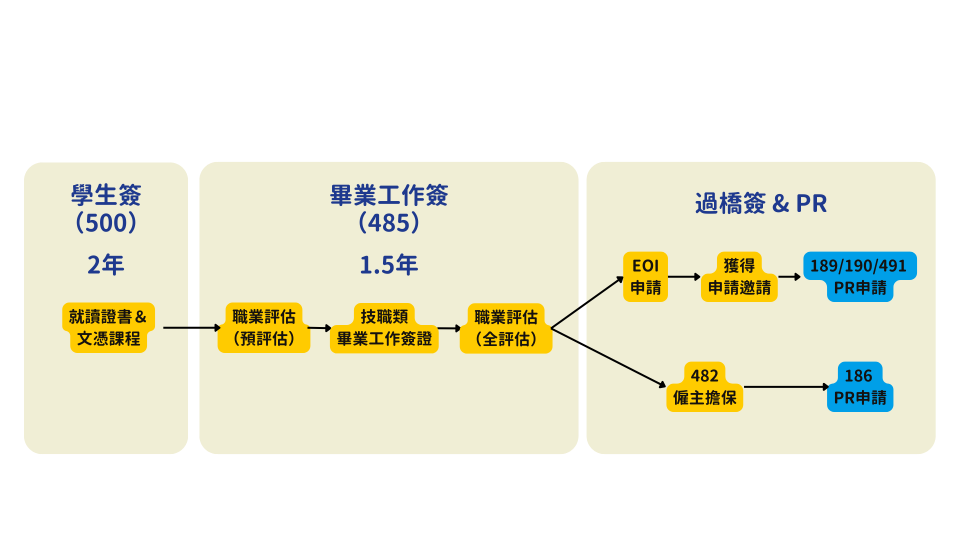
(Australian Immigration Website– Visa Summary for Carpenters, Painters & Cabinetmakers)
-
.

-
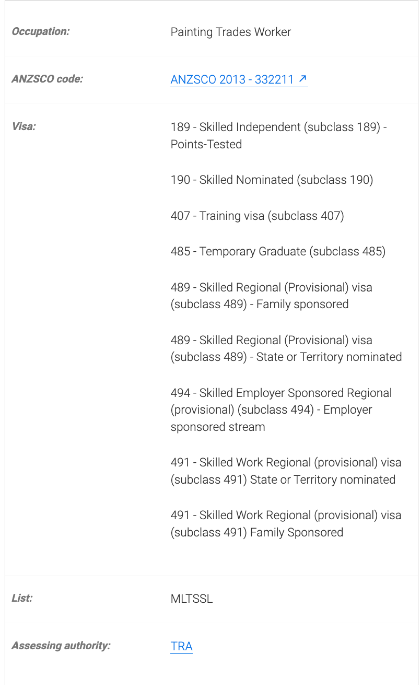
-
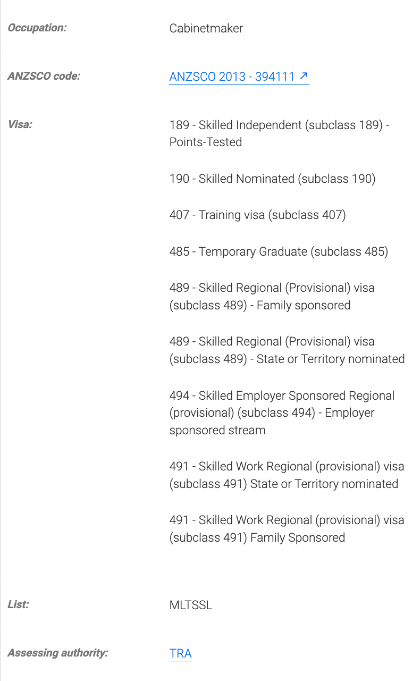
2.2 Only 65 Points Needed for 2024 Skilled Migration Invitation!

2.3 EOI Status Breakdown + Data Chart Overview
As of February 2025, the latest EOI submission statuses for carpentry, painting, and cabinetmaking are as follows:
-
Submitted: Your EOI has been successfully submitted and is waiting for a potential invitation.
-
Invited: You have received an invitation to apply for a visa based on your EOI.
-
Lodged: You have submitted your visa application after receiving an invitation.
-
Closed: Your EOI has been closed — this may be due to visa grant, refusal, or expiry (EOIs are valid for two years).
-
Hold: The applicant has paused their EOI and plans to resume processing at a later time.
Data shows that most carpentry EOIs under the 189 and 190 visas fall under Submitted or Closed, meaning applicants often secure PR once invited.
Compared to other high-score professions, carpentry offers better chances for low-EOI applicants.
With rising demand and salaries, cabinetmaking is becoming a top skilled migration choice for students and career switchers over the next five years.
(Carpentry EOI Snapshot – Feb 2025 (189 & 190))
(Painting EOI Summary – Feb 2025 (189 & 190))
(Cabinetmaker EOI Overview – Feb 2025 (189 & 190))
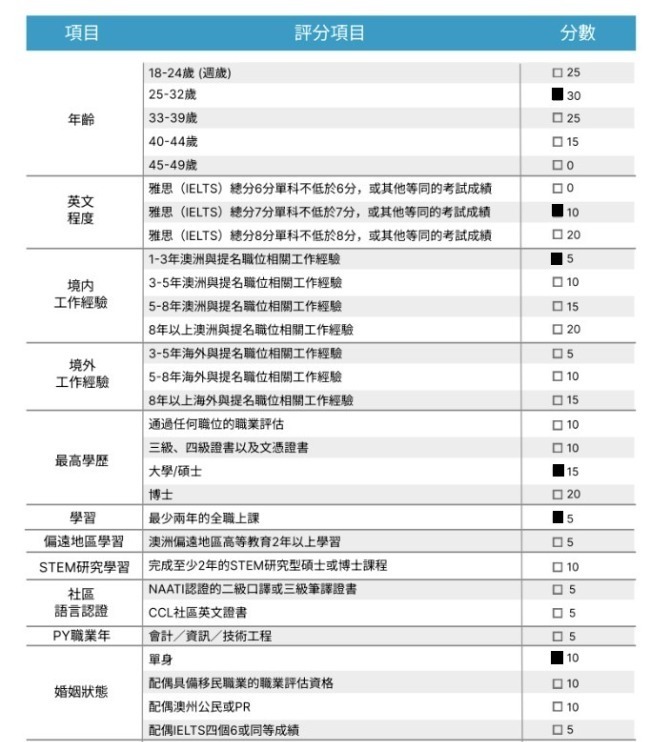
How do you reach 65 points?
In most cases, students under 33 years old can reach 70 points after completing 2 years of study, 1 year of relevant work experience, passing the skills assessment, and achieving IELTS 7 in all bands (or equivalent PTE scores).
This means they already meet the required points and will be among the first to receive invitations when the EOI round opens.
2.4 Skilled in demend 482 visa (Employer Sponsorship) : A Backup Plan for Skilled Migration
It’s important to note that submitting an EOI does not grant a bridging visa. If a student’s 485 Graduate Visa expires before receiving an invitation, they may face the risk of needing to leave Australia.
For students planning a carpentry migration pathway, it is recommended to initiate a 482 employer sponsorship when there are about 8–10 months remaining on the 485 visa. This serves as a backup strategy, increases the chance of visa continuity, and offers greater flexibility for long-term migration planning.
General Steps for 482 Employer Sponsorship (especially for construction and trades workers):
- Business Sponsorship Assessment: The employer must prove financial stability and a clean record. Construction firms and major contractors typically qualify more easily.
- Nomination Application: The role must meet salary requirements and include Labour Market Testing (LMT) to show no suitable local candidates are available.
- Visa Application: The applicant submits their resume, academic credentials, and TRA skills assessment for final processing.
The process usually takes 3 to 4 months, so students aiming for PR through cabinetmaking or painting programs are advised to begin preparing at least 6 months in advance to avoid delays.
3. Carpentry Salaries and Labour Shortage Map: Top 5 Cities with the Most Job Openings
3.1 Carpentry Salary Overview (Based on Seek and Talent Data)
According to the latest job data from Seek and Talent, there are over 12,000 carpentry-related job vacancies across Australia—including roles in carpentry, painting, and cabinetmaking. This highlights a significant shortage of skilled trade workers nationwide. The average salary for these roles is around AUD 80,000 per year, and can rise to AUD 94,000–100,000 for those with over two years of experience and relevant certifications.
Carpentry and cabinetmaking offer low entry barriers and high earning potential, making them top migration choices for students and career changers.
3.2 Carpentry Shortage Trends in Australia’s Top 5 Cities
Beyond the nationwide shortage of skilled workers, each major Australian city shows unique patterns in labour demand—especially in carpentry, cabinetmaking, and joinery.
According to the latest labour market data, Sydney and Melbourne face carpentry shortages of 32% and 28%, mainly due to strong demand for high-end residential renovations and major urban development projects.
In Brisbane, the 2032 Olympic infrastructure boom is driving a major recruitment push, making it a popular destination for migrants and graduates in trades.
Meanwhile, Western Australia offers higher salaries in remote project areas, while South Australia sees rising demand through heritage building restoration, making renovation-related trades such as painting and cabinetmaking increasingly attractive.
The city-by-city breakdown below provides insights into median salaries and job concentration, helping applicants make informed choices about their employment and migration strategies.
| City | Shortage Drivers | Median Hourly Wage | Job Vacancy Share |
|---|---|---|---|
| Sydney |
|
$38.5 | 32% |
| Melbourne |
|
$37.2 | 28% |
| Brisbane |
|
$40.1 | 19% |
| Western Australia |
|
$42.3 | 12% |
| South Australia |
|
$36.8 | 9% |
4. Best Trade for You? A Complete Guide to Carpentry, Painting, and Cabinetmaking
4.1 Overview: Carpentry, Painting & Cabinetmaking
Choosing the right trade that matches your strengths is key to successful migration and employment in Australia.
The table below shows the main job duties and ideal candidate types for each field to help you pick the best course for your goals.
| Occupation | Job duties | Ideal for |
|---|---|---|
Carpenter |
- Construct building frameworks, roofs, and flooring - Operate heavy tools outdoors - Read blueprints and estimate materials |
- Those who enjoy hands-on outdoor work - Have good physical strength - Interested in structural construction with long-term job stability |
Painter & Decorator |
- Paint and treat interior and exterior surfaces - Apply special finishes like stone effects or waterproof coatings |
- Detail-oriented individuals - Prefer indoor work environments - Want to enter the trade quickly with shorter course durations |
Cabinet Maker |
- Produce custom furniture and cabinetry - Perform precise measurements and use CAD design - Combine CNC machinery with traditional woodworking techniques |
- Creative individuals who enjoy craftsmanship - Skilled in space planning and communication - Aim to start a business or join high-end manufacturing |
4.2 School List
Choosing the right school and program is a crucial step in successfully planning your migration through carpentry or cabinetmaking in Australia. Whether you're considering government-funded TAFE training or a more flexible private vocational college, the course details below will help you understand tuition, material fees, and intake dates across different regions.
If you're unsure which school suits your background and goals, our education and migration consultants are here to offer one-on-one guidance tailored to your needs.
| City | School |
Course |
Duration | Tuition fee | Material fee | Application fee | Start date | Location |
|---|---|---|---|---|---|---|---|---|
| Melbourne | Orange College |
Cert III Cabinet Making (Furniture, Kitchen & Bathroom)
|
92 weeks |
$18,000 |
1,750 + 2,000 (Placement) |
$300 | every month | Level 6 416/420 Collins St, Melbourne VIC 300 |
|
Cert III Carpentry + Cert IV Building (Construction) |
99 weeks | $21,000 | $2,250 | $300 | every month | |||
|
Cert III Carpentry + Diploma of Building and Construction (Building) |
131 weeks | $26,000 | $3,250 | $300 | every month | |||
|
Cert III Painting + Cert IV Building Project Support (Contract Admin & Valuer)
|
99 weeks | $19,500 | $2,250 | $300 | every month | |||
|
Cert III Painting + Cert IV Building (Construction)
|
99 weeks | $20,500 | $2,250 | $300 | every month | |||
|
Cert III Painting + Diploma of Building and Construction (Building)
|
131 weeks | $25,500 | $3,250 | $300 | every month | |||
| Alfa College | Cert III Carpentry | 92 weeks | $18,850 | $1,500 | $200 | every month | 196 Latrobe Tce, GEELONG WEST, Victoria 3218 | |
| Holmesglen |
Cert III Carpentry + Cert IV Building
|
104 weeks | $35,280 | / | / | Feb、July | Corner Batesford &, Warrigal Rd, Chadstone VIC 3148 | |
|
Cert III Cabinet Making + Diploma of Building (Construction)
|
104 weeks | $35,280 | / | / | Feb、July | |||
| Brisbane | Alfa College | Cert III Carpentry | 92 weeks | $18,850 | $1,500 | $200 | every month | 11 Darnick Street, Underwood, QLD 4119 |
|
Everthought College of Construction |
Cert III Carpentry | 104 weeks | $17,500 | $2,750 | $250 | every month | Building 4/460-492 Beaudesert Road, Salisbury QLD 4107 | |
| Cert III Painting | 104 weeks | $17,500 | $2,750 | $250 | every month | |||
| Tafe Queensland | Cert III Carpentry | 104 weeks | $27,200 | / | / | Feb、July | 247 Bradman St, Acacia Ridge QLD 4110 | |
| Cert III in Cabinet Making (Furniture & Joinery) | 104 weeks | $26,400 | / | / | Feb、July | |||
| Sydney | Macallan College | Cert III Carpentry | 104 weeks | $21,500 | $2,800 | $200 | every month | Level 1/11 Parkes St, Harris Park NSW 2150 |
| Perth |
Everthought College of Construction |
Cert III Carpentry | 104 weeks | $22,500 | $2,750 | $250 | every month | 92 Mallard Way, Cannington WA 6107 |
| Cert III Painting | 104 weeks | $22,500 | $2,750 | $250 | every month | |||
| Skills Australia | Cert III Carpentry | 104 weeks | $24,000 | $2,000 | $230 | every month | 10 Victoria Avenue, Perth WA 6000 | |
| Adelaide | TafeSA | Cert III Carpentry | 104 weeks | $35,620 | / | / | Jan、July | 1284 South Road, Tonsley SA 5042 |
| Skills Australia | Cert III Carpentry | 104 weeks | $19,500 | $2,000 | $230 | every month | Level 1 East, 50 Grenfell St, Adelaide SA 5000 |
Conclusion:Carpentry isn’t just a migration shortcut — it’s a gateway to a skilled career.
In Australia, trades like carpentry, painting, and cabinetmaking offer more than hands-on training — they’re practical, high-demand pathways to PR. With strong government support and growing labour needs, now is the time to take action.
Not sure which course fits your goals or budget? Our licensed education and migration advisors are here to guide you. Book a consultation today and secure your place in the 2025 migration window.
👉 Recommended Reading:《2025 Complete Guide to Vocational Education in Australia – VET Courses, TAFE, and Skilled Migration Explained》
Disclaimer
1. This article is provided by Level Up Studies for general information only. It does not constitute legal, visa, or migration advice. Please refer to the Department of Home Affairs and official school websites for the most accurate information.
2. Salary and job data come from public sources (e.g., Seek, Talent) and may vary with the market. We do not guarantee specific employment or income outcomes.
3. Visa results depend on individual circumstances. Meeting requirements does not guarantee approval. Our team includes a registered migration agent (MARA: 1790845) and a qualified education agent (QEAC #2822), but final decisions are made by the Australian Government.
4. Course details, fees, start dates, and migration policies are subject to change. Please confirm with the school or our consultants for the latest updates.
5. We are not responsible for decisions made by third parties (e.g., schools, visa authorities, skills assessors). Applicants should seek professional advice for personalised guidance.
For personalised study or migration planning, please contact our professional advisory team.



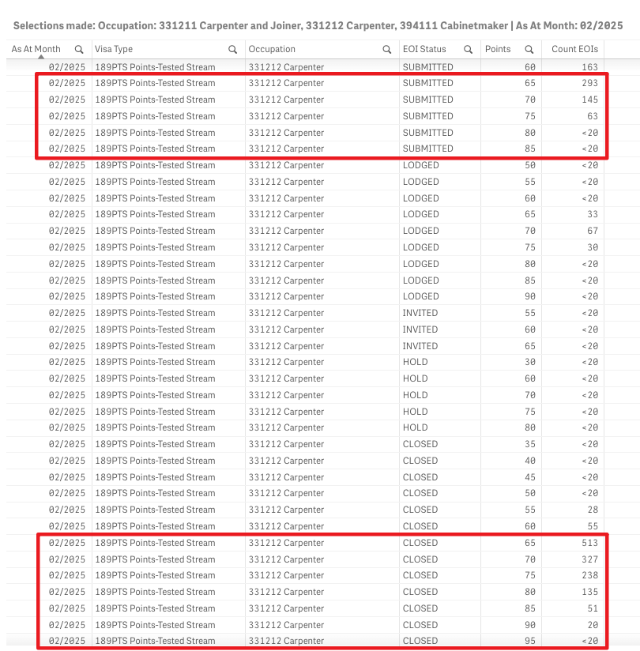
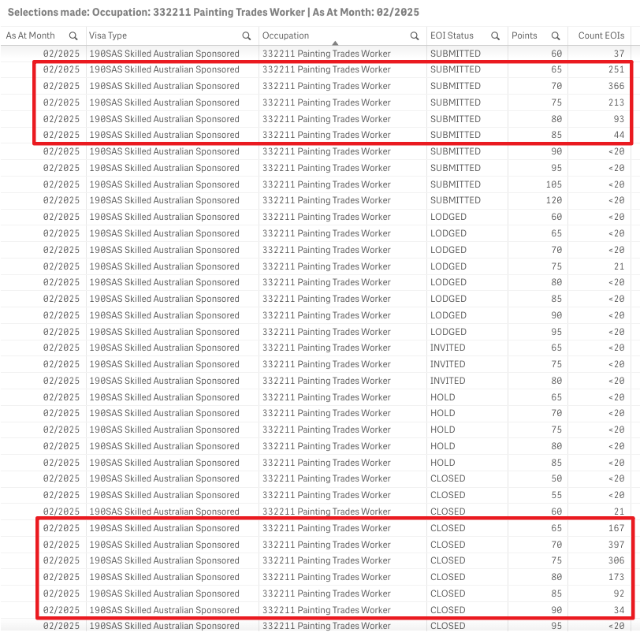
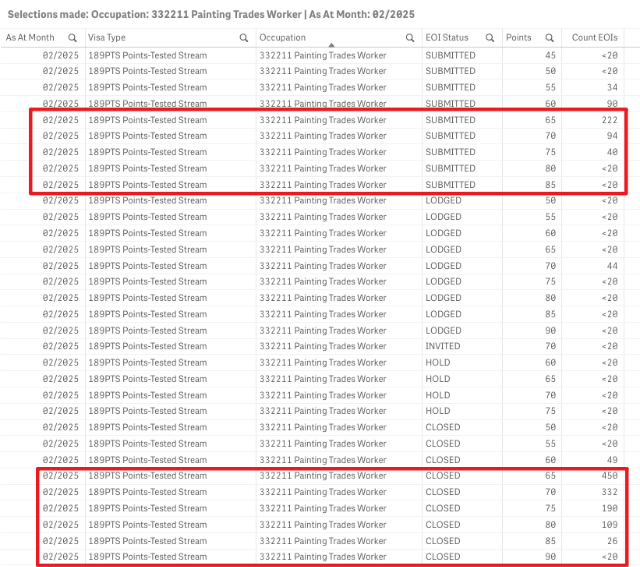
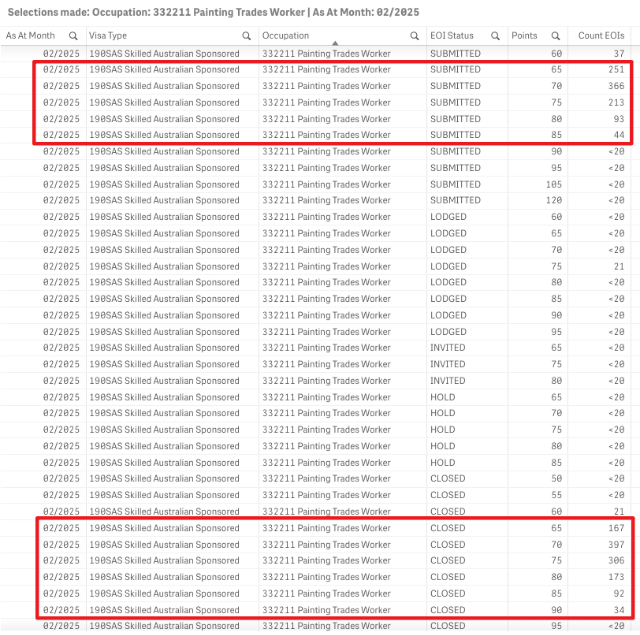

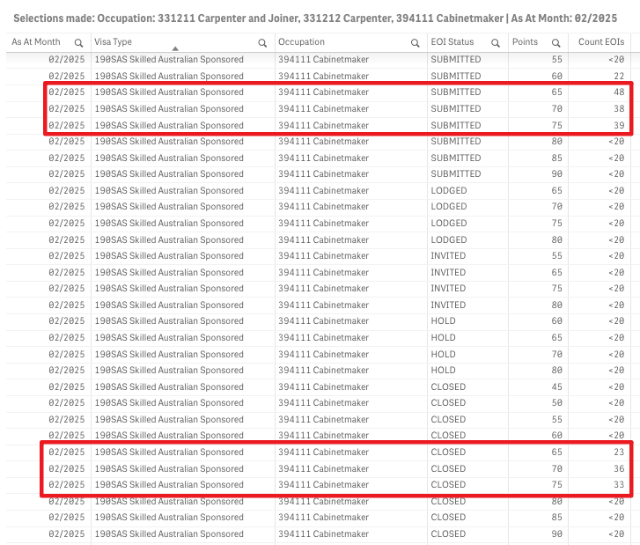


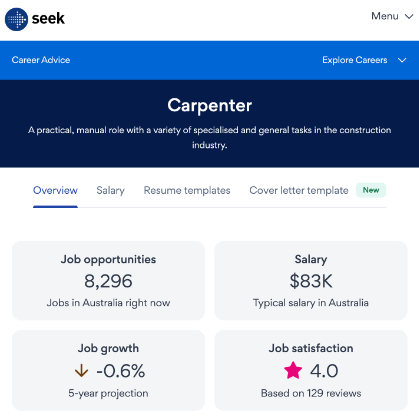
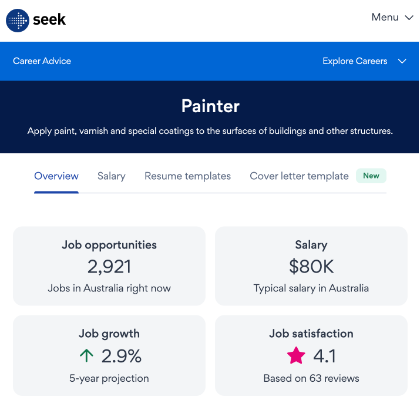
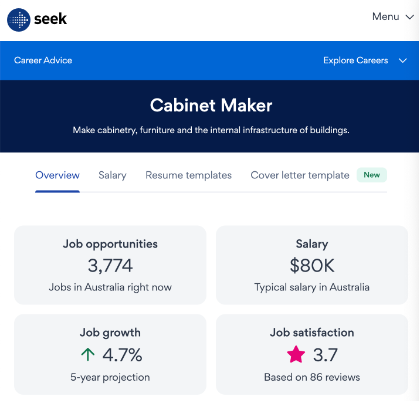

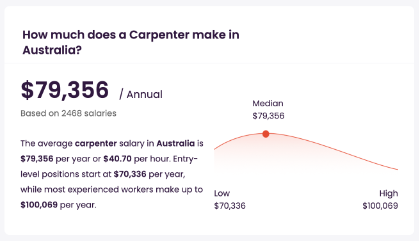

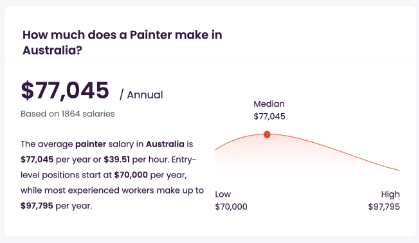

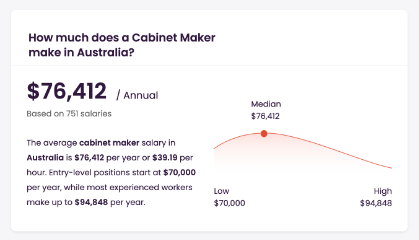 View Lastest Data on Talent
View Lastest Data on Talent
